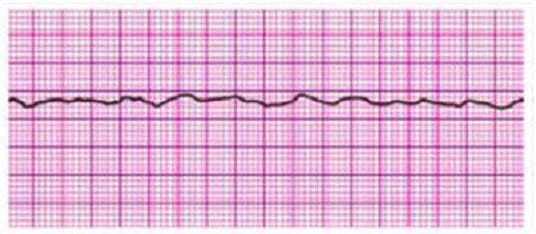Exam Details
Exam Code
:ACLSExam Name
:Advanced Cardiac Life SupportCertification
:Test Prep CertificationsVendor
:Test PrepTotal Questions
:301 Q&AsLast Updated
:Apr 11, 2025
Test Prep Test Prep Certifications ACLS Questions & Answers
-
Question 261:
After initiating CPR, which one of the following treatments should be used first for treating ventricular fibrillation?
A. intubation
B. defibrillation
C. epinephrine IV
D. lidocaine IV
-
Question 262:
Traumatic injuries may include all of the following except:
A. cardiac tamponade
B. hyperkalemia
C. shock
D. tension pneumothorax
-
Question 263:
AC shock tends to cause?
A. asystole
B. respiratory arrest
C. bradycardia
D. ventricular fibrillation
-
Question 264:
In rescuing a near drowning victim, the rescuer should (Choose three.):
A. compress the chest to drain water from breathing passages.
B. assure their own safety.
C. stabilize the cervical spine if a diving accident.
D. start rescue breathing.
-
Question 265:
Expansion of circulating fluid volume with normal saline is recommended in all cardiac arrests.
A. True
B. False
-
Question 266:
The preferred vein for initial cannulation during CPR is the:
A. external jugular vein
B. femoral vein
C. subclavian vein
D. antecubital vein
-
Question 267:
A common lethal complication of lightning strike is:
A. stroke
B. cardiac tamponade
C. congestive heart failure
D. respiratory arrest
-
Question 268:

Following initiation of CPR and one shock for VF, this rhythm is present on the next rhythm check. A second shock is given and chest compressions are immediately resumed. An IV is in place and no drugs have been given. Bag-mask ventilations are producing visible chest rise. What is your next order?
A. Prepare to give amiodarone 300 mg IV
B. Administer 3 sequential (stacked) shocks at 360 Joules (monophasic defibrillator)
C. Perform endotracheal intubation; administer 100% oxygen
D. Administer 3 sequential (stacked) shocks at 200 Joules (biphasic defibrillator)
E. Prepare to give epinephrine 1 mg IV
-
Question 269:
Calcium chloride should be considered in an overdose of: A. bretylium
B. epinephrine
C. verapamil
D. procainamide
-
Question 270:

This patient suddenly collapsed and is poorly responsive. The patient has a weak carotid pulse. A cardiac monitor, oxygen, and an intravenous line have been initiated. The code cart with all drugs and pF transcutaneous pacer is immediately available. Next you would
A. Initiate dopamine at 10 to 20 ug/kg per minute and titrate heart rate
B. Give atropine 1 mg IV up to a total dose of 3 mg
C. Initiate epinephrine at 2 to 10 ug per minute and titrate heart rate
D. Initiate dopamine at 2 to 10 ug/kg per minute and titrate heart rate
E. Begin transcutaneous pacing
Related Exams:
AACD
American Academy of Cosmetic DentistryACLS
Advanced Cardiac Life SupportASSET
ASSET Short Placement Tests Developed by ACTASSET-TEST
ASSET Short Placement Tests Developed by ACTBUSINESS-ENVIRONMENT-AND-CONCEPTS
Certified Public Accountant (Business Environment amd Concepts)CBEST-SECTION-1
California Basic Educational Skills Test - MathCBEST-SECTION-2
California Basic Educational Skills Test - ReadingCCE-CCC
Certified Cost Consultant / Cost Engineer (AACE International)CGFM
Certified Government Financial ManagerCGFNS
Commission on Graduates of Foreign Nursing Schools
Tips on How to Prepare for the Exams
Nowadays, the certification exams become more and more important and required by more and more enterprises when applying for a job. But how to prepare for the exam effectively? How to prepare for the exam in a short time with less efforts? How to get a ideal result and how to find the most reliable resources? Here on Vcedump.com, you will find all the answers. Vcedump.com provide not only Test Prep exam questions, answers and explanations but also complete assistance on your exam preparation and certification application. If you are confused on your ACLS exam preparations and Test Prep certification application, do not hesitate to visit our Vcedump.com to find your solutions here.